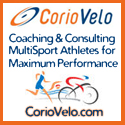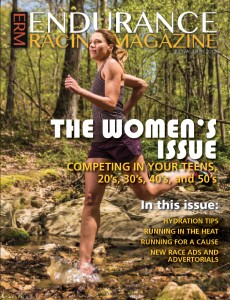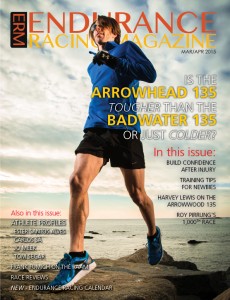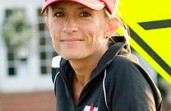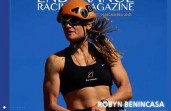Most people struggle with swimming unless they have been swimming since childhood. And even those who swam as children tend to find it challenging when they return to the pool some 30 years later! Why is swimming so hard? Well, it does not have to be! Here are a few tips to get you pointed in the right direction and help make it much easier.
1. Learn to float. To swim effectively, you need to learn how to float. In order to float, you need to relax so your body can feel the water holding you up. If you are tense, there is not such holding-you-up feeling; you just feel you are sinking. It is almost like those hands that were holding you up were taken away.
2. Learn to breathe better in the water. Breathing in the water is not like breathing on land. Nope. Getting water up the nose stings…a lot. Best is to breathe fully out of the mouth into the water, and then allow the air to come back through the mouth while the mouth is above water. Do this during the pull of your breath, and you will be able exhale/inhale almost instantaneously. This quick oxygen exchange also allows the brain to calm down, allowing you to stay more relaxed.
3. Your lungs are your buoy. Provided you are relaxed and your lungs have air inside, you will float easily. Tense up, and you will sink – even with lungs full of air. If you let the air out little by little throughout the stroke, you slowly deflate your buoy and sink. Best is to hold on to the air while swimming, and exhale into the water as you pull to the breathing side. It actually is that simple.
4. Swimming is counterintuitive. We learn most of our movements on land, with gravity. In water, there is no gravity. What instinctively works on land, works against us in the water. On land, faster-shorter turnover usually means more speed. In water, shorter and faster turnover gets you sinking hips, inefficiency and exhaustion in 25 yards.
5. To swim faster, you have to swim slower. This is probably one of the hardest concepts to grasp. With swimming, you have to finish the pull and rotation back to the middle before you can start pulling with the alternate arm. Anything faster than almost one-arm-at-a-time is what I call “wind-milling”. This wind-milling causes shorter and inefficient strokes. You are churning through the water rather than gliding. Use a dive stick as an aid – hold on to it over your head, and you cannot start the pull with the next arm until you grab hold of the stick. (This will also help with tip number 7.)
6. Swim with full extension, not hyperextension. The front crawl utilizes many areas of the hand, arm and forearm to get an effective pull and glide. In order to achieve a good glide, you have to fully extend in the water over your shoulders, without hyperextending the shoulder. You also have to finish the stroke so your hand is fully extended at the bottom, reaching mid-thigh. If you fail to finish the stroke, you will not rotate as easily and you will miss out on a good portion of the glide.
7. Rotate through the water, almost like a corkscrew. We tend to think we need to swim flat in order to move. On the contrary – we need to rotate side to side to about 45 degrees. Two things to help achieve this: you need to finish the pull (as above), and keep the core stable so the body rotates as one unit. Speed the arms up too quickly, and the body just wiggles in the water rather than rotating. Slow the arm pace to almost one-arm-at-a-time, and you will start to notice your rotation and glide (provided you finish the stroke and allow the body to rotate).
8. Push sideways at the finish. Most propulsion in the water results from sideways movements rather than up and down. Finish the pull pushing out to the side rather than pulling up behind you.
Do a quick sculling drill: Make infinity signs (sideways figure-8) in the water while on your back, with your hands by your hips and thighs. You should feel yourself moving fluidly. After 4-6 infinities, switch to figure-8s, pushing the water up and down rather than side to side. The figure-8s are much harder, and you get less glide for a lot more effort. The sideways motion is what helps propel you forward, while allowing the hip to rotate more. Try it. You might be surprised.
9. Don’t move your head from side to side. Like dancing or gymnastics, keeping your head fixed looking down rather than moving from side to side will enable you to swim more efficiently. Let your head move from side to side with each stroke, and you may find yourself getting dizzy. As they do in dancing, ‘spot the head’ when turning. This means, keep the eyes fixed on a non-moving thing while you allow the body to rotate or pivot. So let your body rotate while your head stays still, looking at the bottom of the pool.
10. Don’t kick so hard! The kick portion of the stroke can be a propulsion aid, but many of us kick too hard, or inefficiently, and get tired but go nowhere. Pretend you are kicking from the hip, but also flicking bugs off the tops of your feet. You should feel the water roll off the tops of your feet and toes. Think of your knee as a hinge; it has to bend so the feet can do more flexing and flicking. If your legs are stiff, or you kick from the knees, your hips will sink and you will feel like a tugboat in the water. Fins can help, but they can also become a crutch. Learn to kick correctly – then kick a lot to really get good at it.
Swimming is an amazing form of exercise if you can learn how to relax and swim more efficiently. These tips are just part of the basics; learning to swim requires more than just reading a book or watching a video. Find a swim stroke mechanics expert to watch you swim and offer suggestions. They should be able to provide tips along the way that include the above-mentioned techniques, to help make your swimming more enjoyable.
Joanna K. Chodorowska, BA, NC, is a nutrition, swim and triathlon coach and competitive triathlete. She founded Nutrition in Motion, specializing in personalized nutrition programs for athletes, including Race Day Nutrition, Anti-inflammatory and Gluten-free plans. She is also an expert swim instructor, focusing on form first. She has taught children and adults to swim, and swim better! For more information, check out Joanna’s Website at www.nutrition-in-motion.net or www.n-im.net.



